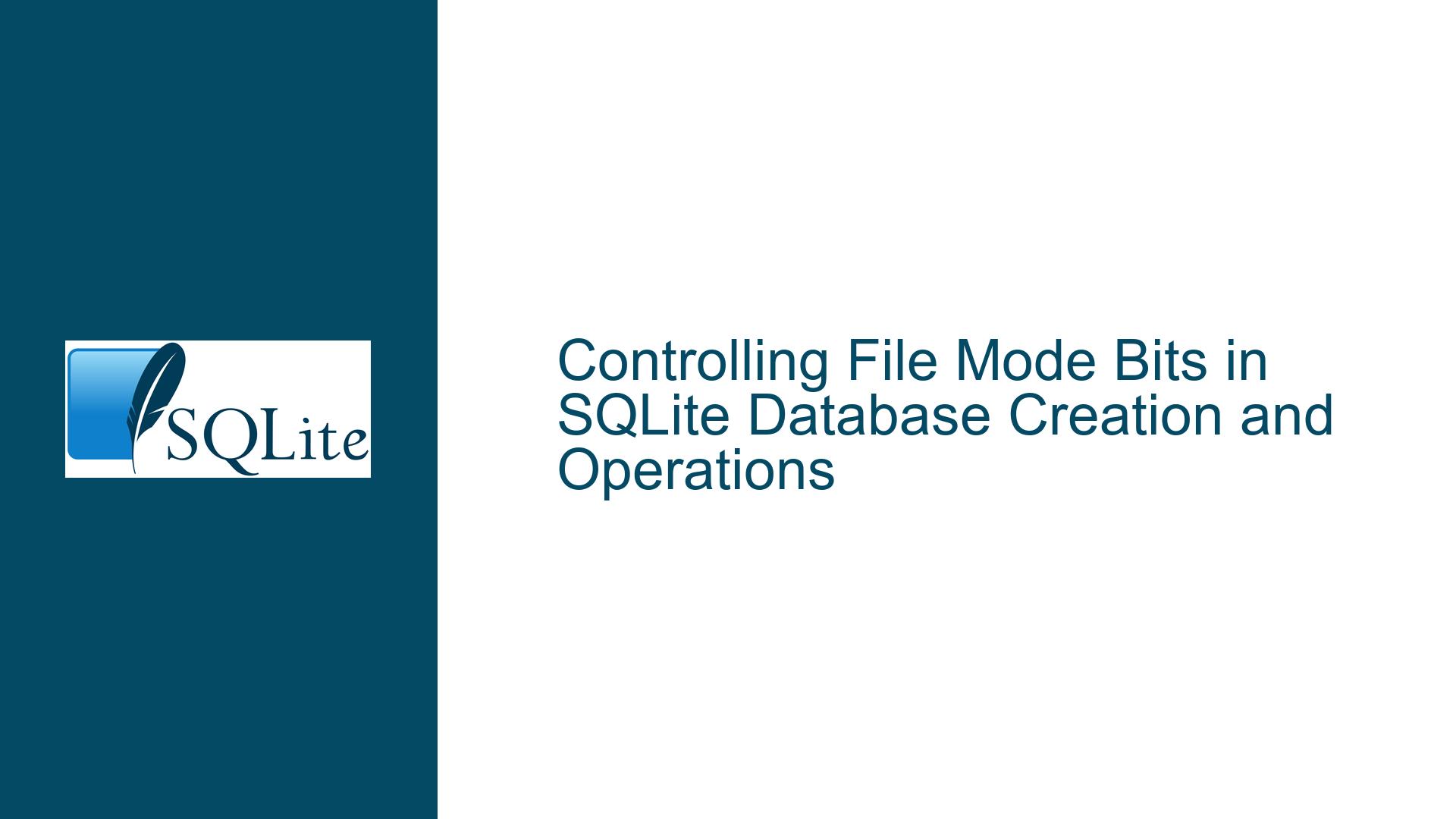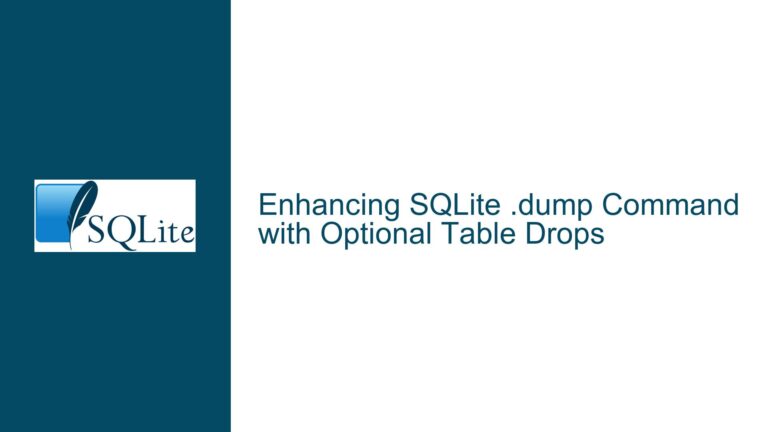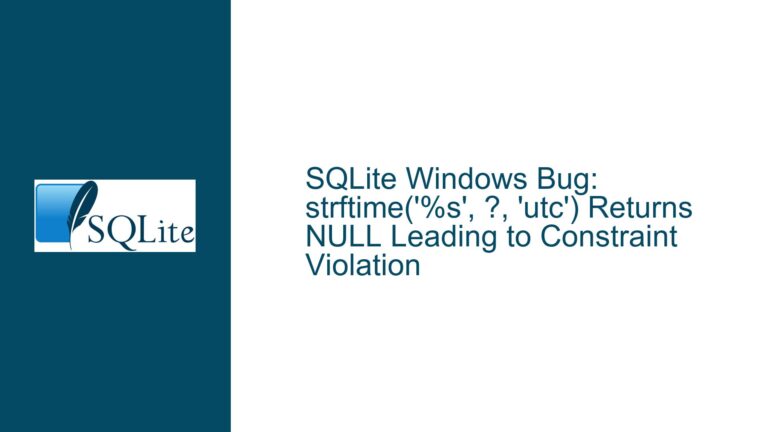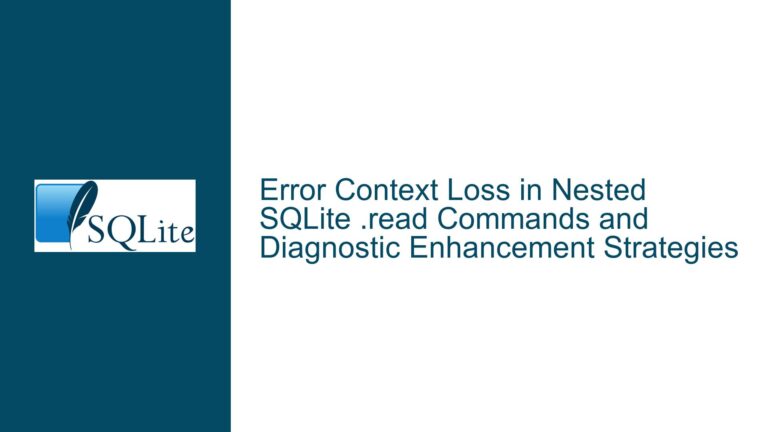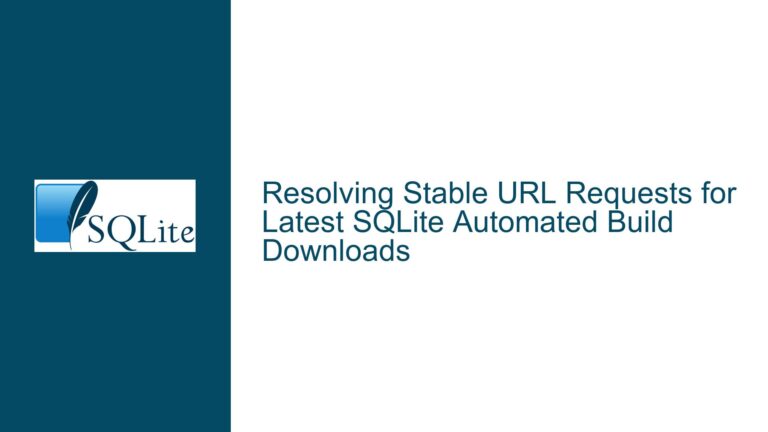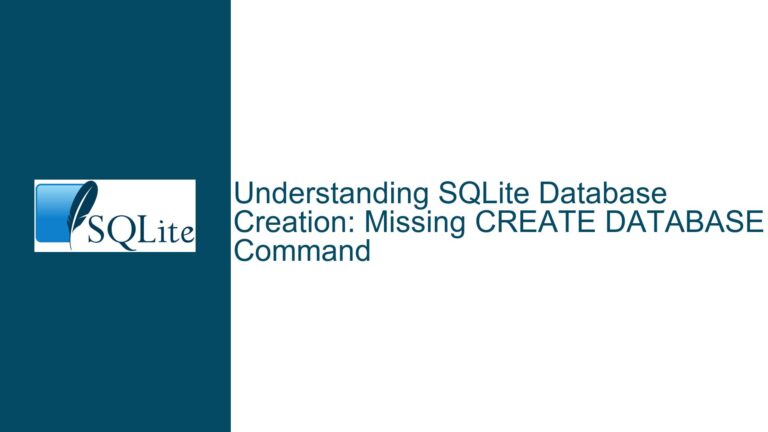Controlling File Mode Bits in SQLite Database Creation and Operations
Understanding File Mode Bits and Their Impact on SQLite Database Files
File mode bits, often referred to as permissions, play a crucial role in determining how files are accessed and manipulated within a filesystem. In the context of SQLite, these mode bits are particularly important when creating or modifying database files, journal files, and Write-Ahead Logging (WAL) files. The current implementation of SQLite relies on the process umask to determine the default permissions for newly created files. However, this approach can be limiting, especially when specific permissions are required for database files or their associated components.
The umask is a process-specific setting that masks out certain permission bits when files are created. For example, if the umask is set to 022, and a file is created with default permissions of 0666, the resulting file will have permissions of 0644 (read and write for the owner, and read-only for others). While this mechanism works for many use cases, it lacks the flexibility needed in scenarios where fine-grained control over file permissions is required.
In SQLite, the creation of database files, journal files, and WAL files is handled by the Virtual File System (VFS) layer. The default Unix VFS uses the open() system call to create these files, and the permissions are determined by the process umask. This means that if an application needs to create database files with specific permissions, it must temporarily change the process umask around any operation that might create a file. This approach is not only cumbersome but also prone to race conditions and other issues.
Moreover, the SQLite documentation does not explicitly state how mode bits are handled when creating database files or their associated components. While the code suggests that SQLite attempts to copy the mode bits of the main database file for journal and WAL files, this behavior is not documented and should not be relied upon. This lack of documentation and control over file permissions can lead to security vulnerabilities, especially in multi-user environments where strict access control is necessary.
Exploring the Limitations of Current SQLite File Permission Mechanisms
The current mechanisms for controlling file permissions in SQLite have several limitations that can impact the security, flexibility, and usability of the database system. One of the primary limitations is the reliance on the process umask to determine file permissions. This approach does not provide a way to specify custom permissions for individual files, which can be problematic in scenarios where different files require different permissions.
For example, consider a scenario where an application needs to create a database file with permissions of 0640 (read and write for the owner, read-only for the group, and no access for others). With the current implementation, the application would need to change the process umask to 0027 before creating the database file and then restore the original umask afterward. This approach is not only cumbersome but also error-prone, as it requires careful management of the umask around every file creation operation.
Another limitation is the lack of support for specifying file permissions through the SQLite API. The sqlite3_open_v2() function, which is used to open or create database files, does not provide a way to specify the desired file permissions. This means that applications must resort to workarounds, such as creating a template file with the desired permissions and using the modeof= URI parameter, as suggested in the discussion. While this approach can work, it is not ideal, as it requires additional steps and can introduce complexity into the application code.
Furthermore, the current implementation does not provide a way to control the permissions of journal and WAL files independently of the main database file. This can be problematic in scenarios where different permissions are required for these files. For example, an application might want to restrict access to the WAL file to prevent unauthorized modifications, while allowing broader access to the main database file. With the current implementation, this level of control is not possible, as the permissions of journal and WAL files are derived from the main database file.
Implementing Fine-Grained Control Over SQLite File Permissions
To address the limitations of the current file permission mechanisms in SQLite, several approaches can be considered. One approach is to introduce new URI parameters that allow applications to specify the desired file permissions when opening or creating database files. These parameters could include mode, user, and group, which would allow applications to specify the file mode bits, owner, and group, respectively.
For example, an application could use a URI like file:database.db?mode=0640&user=1000&group=1001 to create a database file with permissions of 0640, owned by user 1000, and belonging to group 1001. This approach would provide a simple and flexible way to control file permissions without requiring changes to the process umask or the use of template files.
Another approach is to extend the sqlite3_open_v2() function to support additional flags that allow applications to specify the desired file permissions. For example, a new flag SQLITE_OPEN_MODE(val) could be introduced, which would allow applications to specify the mode bits for newly created files. This flag could be combined with other flags using the bitwise OR operator, providing a way to control file permissions without introducing new URI parameters.
For example, an application could use the following code to create a database file with permissions of 0640:
sqlite3_open_v2("database.db", &db, SQLITE_OPEN_READWRITE | SQLITE_OPEN_CREATE | SQLITE_OPEN_MODE(0640), NULL);
This approach would provide a more direct way to control file permissions, without requiring the use of URI parameters or template files. However, it would require changes to the SQLite API and the underlying VFS implementation, which could introduce compatibility issues with existing applications.
In addition to these approaches, it is also important to consider the impact of file permissions on the security and performance of SQLite databases. For example, overly restrictive permissions can prevent legitimate access to the database, while overly permissive permissions can expose the database to unauthorized modifications. Therefore, any changes to the file permission mechanisms should be carefully designed to balance security, flexibility, and performance.
Conclusion
The current mechanisms for controlling file permissions in SQLite have several limitations that can impact the security, flexibility, and usability of the database system. To address these limitations, new approaches such as URI parameters and API extensions should be considered. These approaches would provide a more flexible and secure way to control file permissions, without requiring changes to the process umask or the use of template files. However, any changes to the file permission mechanisms should be carefully designed to ensure compatibility with existing applications and to balance security, flexibility, and performance.
